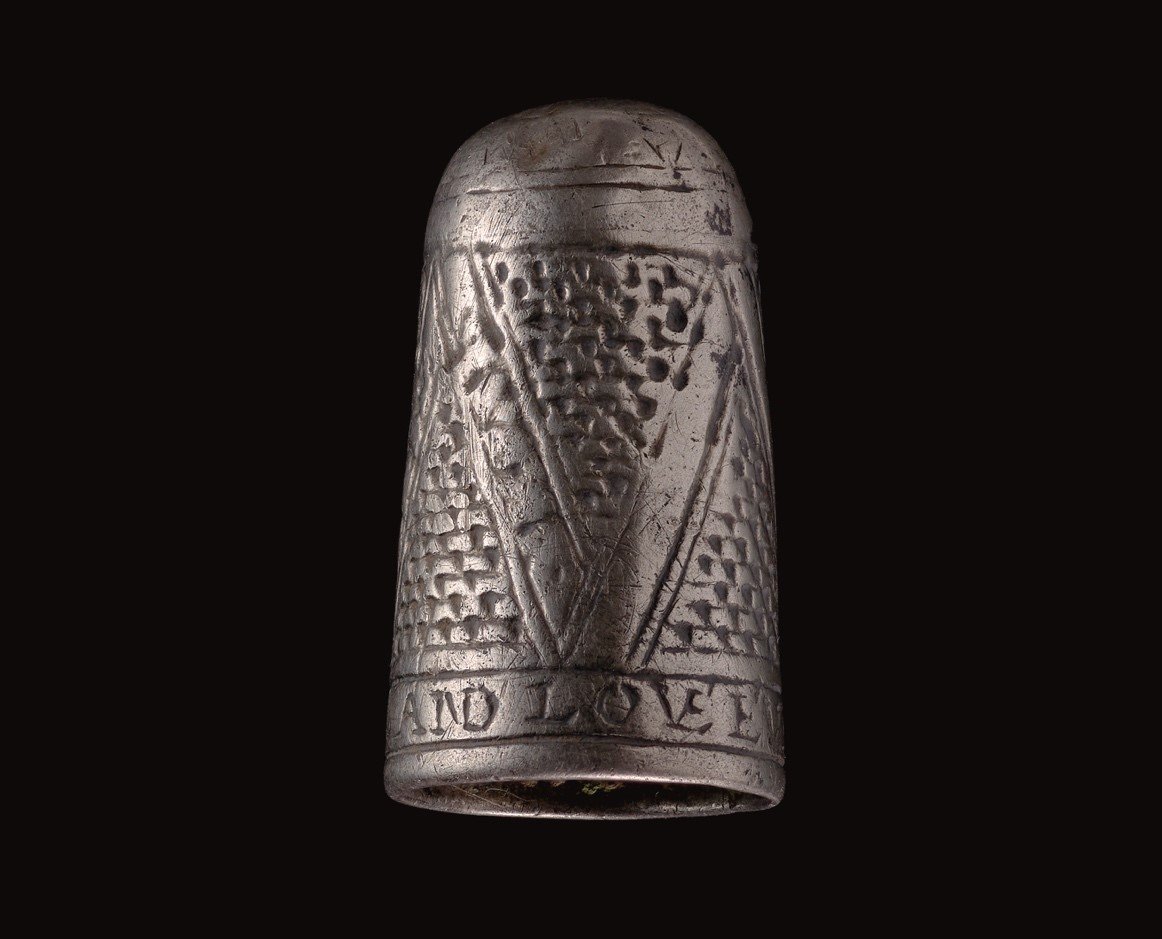
In November 2020, under the shade of an oak tree in a field near to Pembrokeshire’s 13th-century Carew Castle, metal detectorist Robert Edwards found a 300-year-old silver thimble that is now officially a treasure. Edwards thought at first that his metal detector had picked up a sixpence, but was pleasantly surprised to find the Post-Medieval thimble just one or two inches beneath the soil.
The date of the thimble’s creation has been placed between 1682 and 1740. The treasure was built in two pieces and has six transverse bands in a zig-zag, over the top of a basket-weave pattern. This is a typical design for 17th-century thimbles in England and Wales, and it was the pattern that alerted Edwards that the heavy silver thimble was indeed “something special.”
Around the base of the posy thimble, engraved in capitalized Roman script, are the words “LYKE STIL AND LOVE EVER,” meaning “like enduringly, love forever.” Short inscriptions on “posy” items—particularly popular as rings in the 15th through 17th centuries in Britain and France—typically expressed affection and regard between lovers. A spokesperson for the National Museum Cardiff postulated that “perhaps thimbles, worn on the finger during needlework, were considered an intimate (and therefore romantic) possession, suitable as a gift between lovers.”
The thimble was sent to the National Museum Cardiff for identification after Edwards handed it to Mark Lodwick, the finds coordinator for the Portable Antiques Scheme in Wales. It was declared an official treasure on Wednesday, March 13, by H.M. Acting Senior Coroner for Pembrokeshire and Carmarthenshire, Paul Bennett.
In accordance with the 1996 Treasure Act, objects classified as “treasures” must be offered for sale to a museum (at a price defined by the Treasure Valuation Committee) before it is retained by the finder. Tenby Museum and Art Gallery, within just 10 miles of the field in which the thimble was found, has put forward its desire to acquire the thimble for its collection.
Other objects declared official treasures on March 13 include a Bronze Age hoard of axe-head fragments, a Post-Medieval silver pendant, a double-sided 17th-century medallion showing the profiles of King Charles I and Queen Henrietta Maria, and medieval silver seal matrix (about which Tenby Museum has also expressed their interest in acquiring).
Edwards added: “To be honest, my cousin (who is also my detecting partner) was a little jealous… I like to think about who used it. Was it used in the castle I could see over the way? Did someone get in trouble when it was lost? I’m very happy that I’ve been able to share it with the rest of you.”